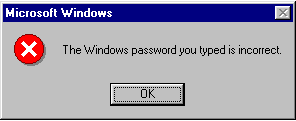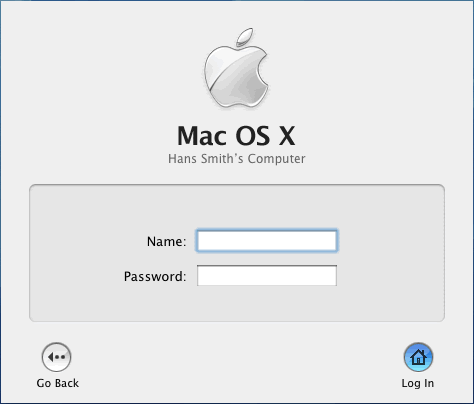Positive emotion from the point of first contact
An application can engender positive or negative emotions in its users at the very earliest point of contact. When interacting with an operating system, the earliest point of contact is often the logon UI. The way an OS treats logon UI can easily establish a good or bad impression in the user’s mind.
A long time ago, if you typed an incorrect password into a Windows logon dialog, you’d get something like this:

Windows is clearly treating the situation as an error and, moreover, it clearly thinks the error is the user’s fault. Later iterations of the OS soften this message somewhat. By Windows 2000, the message changes to:
The system could not log you on. Make sure your User name and pasword are correct, then type your password again. Letters in passwords must be typed using the correct case.
This is a big improvement (not sure why User is capitalized, though), but the tone is still stiff and a tad patronizing. By Windows XP’s Home edition, things become much more conversational:
Did you forget your password?
Please type your password again.
Be sure to use the right uppercase and lowercase letters.
This is pretty good, and it’s hard to think of how to make this message much friendlier. Apple manages to, though, in its OS/X logon dialog. Apple’s solution deftly finesses the situation by avoiding the error message altogether.

If you don’t enter the right password, the dialog literally shakes back and forth and the password field is cleared. A couple of years ago when a colleague showed this to me, I laughed out loud. The dialog is clearly shaking its head to say, "Nope!", and just as clearly letting the user know they have to try again. It does this all in a humorous way that engenders a positive emotion in the user and without having to play verbal games to avoid assigning blame.